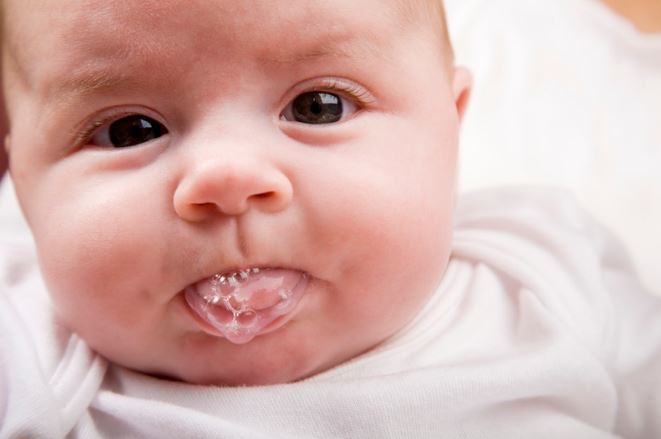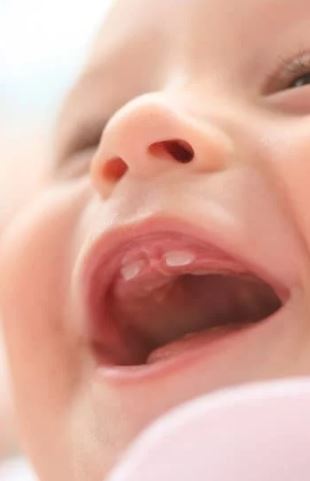7. Medication and oral health
Families should always administer medications according to instructions from the prescriber, pharmacist, or packaging.
This section is intended to broaden Maternal and Child Health Nurses’ knowledge of how medications can affect oral health.
It is a guide only and any instructions around medications from the prescriber, pharmacist, or packaging must always take precedence. Maternal and Child Health nurses should use their own professional judgement about appropriate referral to a medical or dental practitioners.
This section describes the generally accepted information at the time of publication. Maternal and Child Health Nurses should regularly update their knowledge of the area and exercise professional judgment when applying this information.
Nurses and other clinical professionals can contact a specialist medicines information department with any clinical - Royal Children’s Hospital drug information service (03) 9345 5208 - Royal Woman’s Hospital drug information service (03) 8345 3190 - Monash Medical drug information (including pregnancy and breastfeeding) (03) 9594 2361 |
|---|
7.1 How medications and supplements can affect oral health
Some essential medications, as well as non-prescribed supplements such as over-the-counter vitamins, herbal remedies, and alternative treatments, may affect oral health. Understanding these potential effects enables MCH nurses to guide families in mitigating negative oral health outcomes.
Some potential impacts of medications and supplements include (but are not limited to):
Reduced saliva is known as dry mouth (xerostomia). Saliva helps to neutralise acids and protect teeth from decay, so a reduction in saliva increases the ris
- Stimulants (dexamfetamine, lisdexamfetamine [Vyvanse], methylphenidate [Ritalin]
- Bronchodilators (salbutamol [Ventolin], ipratropium [Atrovent])
- Opioids (morphine [Ordine])
- Proton-pump inhibitors (omeprazole [Losec])
Some medications can imbalance the oral flora (natural bacteria) in the mouth, leading to conditions like oral candidiasis (oral thrush). Medications that may disrupt oral flora include:
- broad spectrum antibiotics
- Corticosteroids (prednisolone [Predmix])
- Immunosuppressants (methotrexate [Methoblastin, Trexject], mycophenolate [Cellcept], tacrolimus [Prograf, Advagraf XL], ciclosporin [Neoral])
Medications and supplements that contain sugars and acids, particularly in sticky or chewy formulations, can adhere to teeth and contribute to demineralisation and tooth decay. Medications that may lead to the demineralisation of teeth include:
- liquid painkillers
- chewable vitamins
- asthma medication
7.2 General oral health advice while taking medication or supplements
MCH nurses can offer families practical strategies to reduce the potential oral health impacts of medications. The following tips are designed to help families protect their oral health when using medications. However, they are a guide only and any instructions about medications from the prescriber, pharmacist, or packaging must always take precedence.
- When available, encourage families opt for sugar-free versions of a medication.
Review common over-the-counter medications you recommend to families, such as painkillers. Note down specific brands that are sugar-free so you can suggest them specifically when needed. - When medication allows, families can encourage it can be taken around mealtimes to reduce sugar or acid spikes in the mouth.
- When medication allows, avoid giving medications just before bed.
- Families can encourage their child to sip or rinse their mouth with water after oral medications.
- Families can encourage children to brush teeth, gums, and tongue 30 minutes after taking a medication.
Children with chronic conditions that require frequent medication may be at a greater risk of oral health side effects and should be referred to a dental practitioner if the family has not already been linked with one.
With some exceptions, most of the risks to oral health from medications can be managed with normal dental hygiene strategies and regular check-up intervals with dental practitioner.
7.2.1 Sugar in over-the-counter medications and supplements
Most paediatric formulations of prescription medication are sugar free (with some exceptions).
However, many over-the-counter medications or supplements can contain significant amounts of sugar.
Generally, non-prescribed supplements, herbal remedies, and tinctures are not necessary for good overall health, unless recommended by a health professional (RCH 2016). These medicines may unnecessarily increase exposure to sugars and acids that contribute to tooth decay (TGA 2008). If families are concerned about any potential deficiencies their child may have, they should seek professional medical advice.
Patients and carers should be advised to consult with their pharmacist if they are concerned with the amount of sugar in their medications or are looking for alternative formulations. |
|---|
7.2.2 Risks associated with disguising the taste of medication
Some medications may taste “bad” to children, and disguising in food is a strategy for administering medications – however this might be problematic (RCH 2018):
- Jam and honey contain significant amounts of sugar and can cause dental problems
- If the patient does not finish the whole food, it is hard to calculate the dose given
- Some medications cannot be crushed or chewed
Jam, honey and other sugar based foods should be avoided in medication administration just as they should be in teething and dummy use (Heathdirect, 2023). Patients and carers should consult with their pharmacists for advice on alternative dosing forms if children cannot use their current medication.
7.3 Oral health for children with asthma
Asthma in children can influence tooth and craniofacial development (Moreira, 2023), and the medications commonly used for its treatment and management may also have adverse effects on oral health.
Medications for asthma
Corticosteroids (such as fluticasone [Flixotide]) are the first line agents for maintenance of asthma and can have negative effects on teeth – especially if they are deposited in the mouth after administration via inhalation (Mastora 2017, Randell 2003). Effects include:
- Defects in enamel
- Oral candidiasis
- Tooth decay (from acidic delivery solutions)
Bronchodilators (such as salbutamol [Ventolin] and ipratropium [Atrovent]) are commonly used as relievers and can reduce salivary flow due to their effect on the sympathetic nervous system (Ryberg 1990).
Advice
To support oral health in children with Asthma, in addition to the general advice provided in ‘7.2 General oral health advice while taking medication or supplements’, it is recommended:
- children taking asthma medication should receive more frequent oral health check-ups, as recommended by their dental practitioner.
- carers should be encouraged to use spacers wherever practical. Spacers help suspend drug particles in air, leading to increased lung penetration and less mouth deposition (the medication will be more effective in asthma control and less likely to cause candidiasis) (Woodcock 1997).
- the mouth should be rinsed (gargling and spitting water) immediately after each dose of a corticosteroid. (Therapeutic Guidelines 2023)
- children should be advised not to drink sugary or acidic drinks to relieve a dry mouth and should instead drink tap water (which contains fluoride).
In addition to these issues with asthma medications, some other common medications (such as ibuprofen [Nurofen]) used in children can exacerbate asthma and should be used with caution in asthmatic patients. Carers should be advised to consult with their pharmacist when choosing medications.
For families needing support with spacer use
Find easy-to-follow videos from the Royal Children’s Hospital Melbourne, including how to use a puffer with a spacer and mask, plus other family-friendly asthma resources:
The Royal Children's Hospital Melbourne, Kids Health Info : Asthma – videos
7.4 Oral health for children with epilepsy
Children with epilepsy or other seizure disorders may be more vulnerable to oral health issues (Goswami 2023). Some types of seizures (grand mal, generalised tonic clonic) can lead to tooth damage, and some medications can have additional adverse dental effects.
Gingival hyperplasia
Phenytoin [Dilantin] is particularly associated with gingival hyperplasia, a condition where gum tissue overgrows. This affects up to 70% of patients, usually beginning within three months of starting treatment and reaching its peak around 12 months (Doufexi, Mina, & Ioannidou, 2005; Ramírez-Rámiz 2017). While other anticonvulsants may also be linked to gingival hyperplasia, the strongest evidence is for phenytoin
Gingival hyperplasia is a condition that requires treatment from dental professionals (usually to remove plaque deposits) so clinicians should be vigilant for signs and refer at an early stage (Therapeutic Guidelines 2023)

Image sourced from DermNet.
Reduced saliva flow and sugary formulations
Some medications (carbamazepine [Tegretol], phenobarbital) have been associated with reduced salivary flow, and some paediatric formulations contain significant amounts of sugars (valproate [Epilim Syrup], ethosuximide [Zarontin Syrup]) which can cause dental issues. Patients and carers should be reminded of the importance of dental hygiene, and regularly see their dental health professional.
Advice
In addition to the general advice provided in ‘7.2 General oral health advice while taking medication or supplements’, it is recommended:
- children with epilepsy should be linked with a dental practitioner by the time their first tooth appears if their general care team has not already arranged this.
- families should be made aware diligence is required to maintain good oral hygiene if children develop gingival hyperplasia.
7.5 Do not recommend topical gels for teething pain
Topical gels are not recommended for teething pain relief by health professionals, including MCH nurses. There are also safety concerns with several agents used in these gels exhibiting toxicity during use for teething:
- Lidocaine (lignocaine) (Birant et al 2024)
- Benzocaine (FDA 2018)
- Choline Salicylate (Williams et al 2011)
They may also increase the risk of choking if the gel is swallowed and a child’s throat becomes numbed.
Additionally, a review found limited evidence to support the efficacy of teething gels, they may not effectively reduce pain associated with teething (Teoh & Moses, 2020). Literature shows that teething rings (cold, not frozen), cuddle therapy, and rubbing the gums (with a clean finger) were the most effective methods to reduce teething symptoms (Memarpour et al 2015).
Amber teething necklaces can pose a choking and strangulation hazard, and should also not be recommended (Therapeutic Guidelines 2023).
Refer to section ‘2.7 Teething’ for more information about easing teething pain.
If pain relief is necessary, encourage families to use child friendly, sugar free painkillers when available to help protect those new teeth! |
|---|
7.6 Tooth mousse
Tooth mousse is a topical treatment designed to assist with the remineralisation of tooth enamel by delivering calcium and phosphate to the teeth, it is available with or without fluoride.
Tooth mousse is made from milk derived protein and is therefore not suitable for people who have an allergy to milk proteins.
Tooth mousse is often recommended by dental practitioners for children with sensitive teeth or teeth prone to tooth decay. The oral health professional will provide guidance on when and how to use it. Tooth mousse should not replace the regular use of fluoride toothpaste for children over 18 months of age and typically applied after toothbrushing.
Developed with reference to the GC Tooth Mousse website: https://www.toothmousse.com.au
7.7 Oral health concerns with antibiotics
Broad spectrum antibiotics can change the oral microflora which can result in oral health issues like dental caries, gingivitis, periodontitis, oral candidiasis, and halitosis (Rajasekaran 2024).
Maternal use of tetracycline antibiotics during pregnancy can lead to tooth staining and poor mineralisation in children. Tetracyclines are generally avoided if possible in pregnant women and children (under 8 years old) (AMH 2024).
Tetracycline antibiotics include:
- Doxycycline
- Minocycline
- Tetracycline (not used in Australia but may be relevant for immigrant populations)
Mineralisation problems and staining on teeth should be addressed by the dental team for patients


